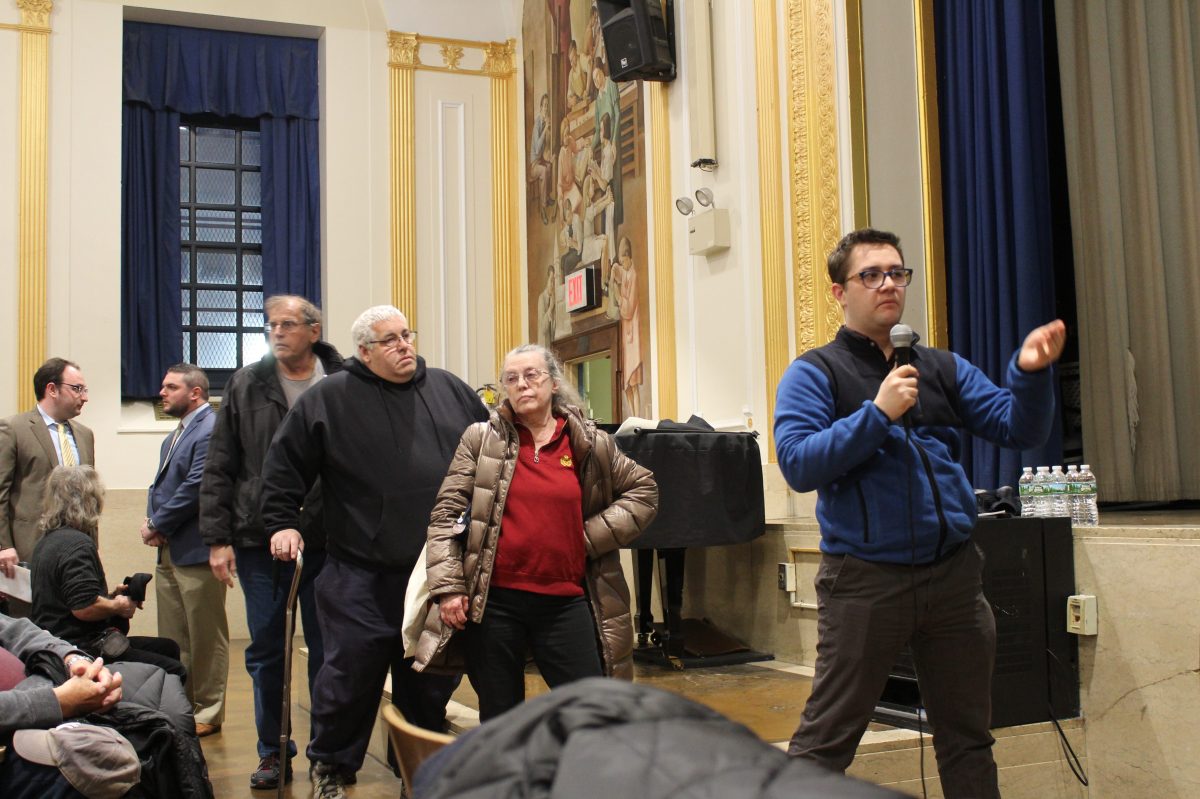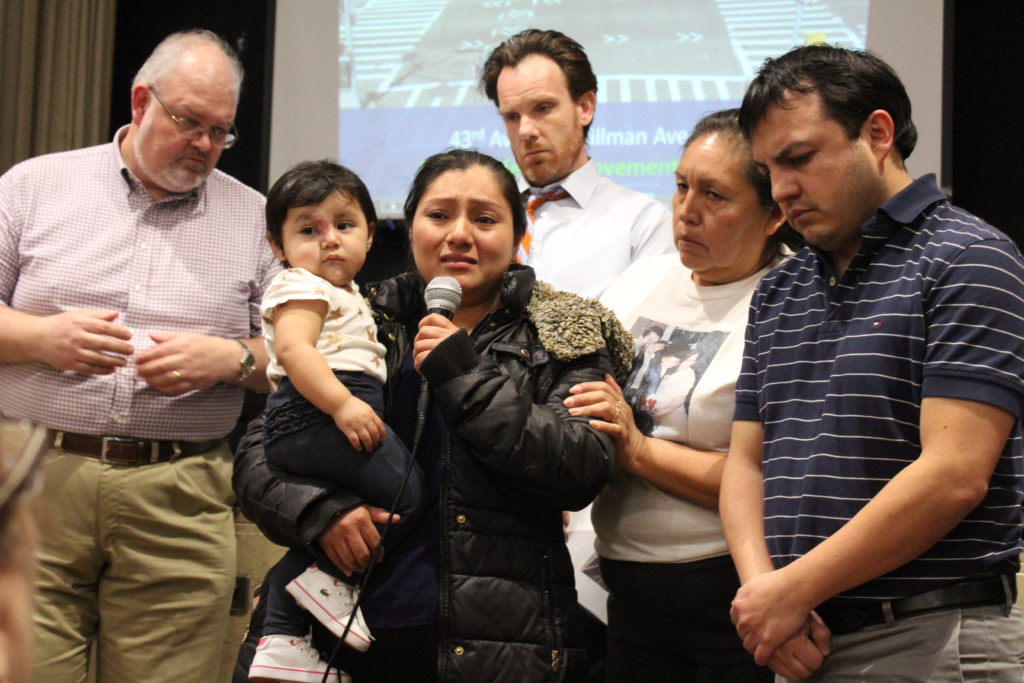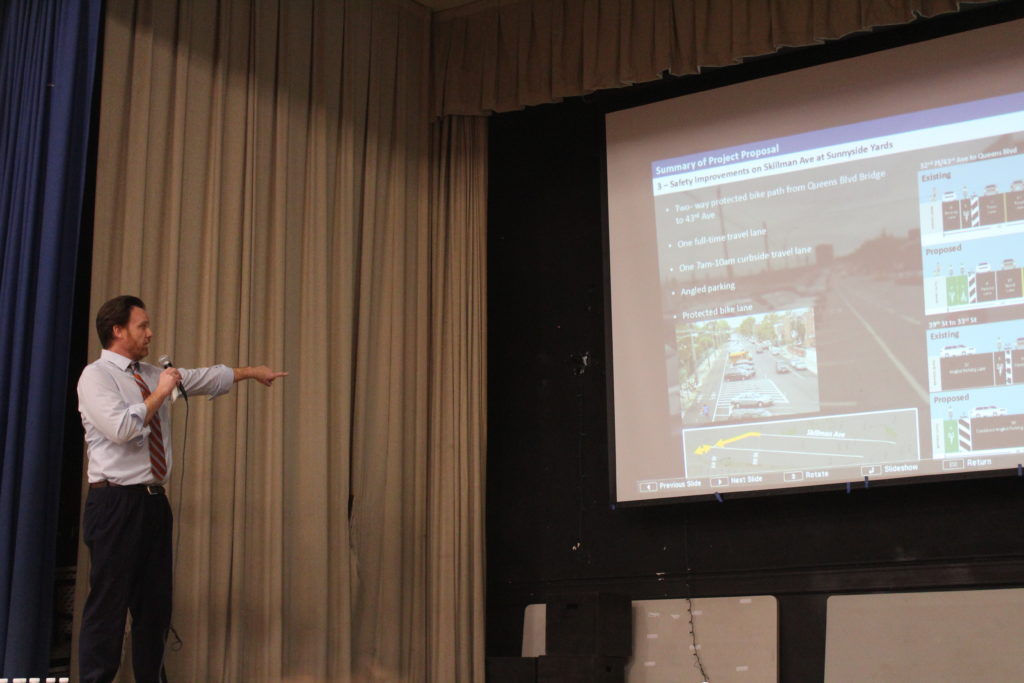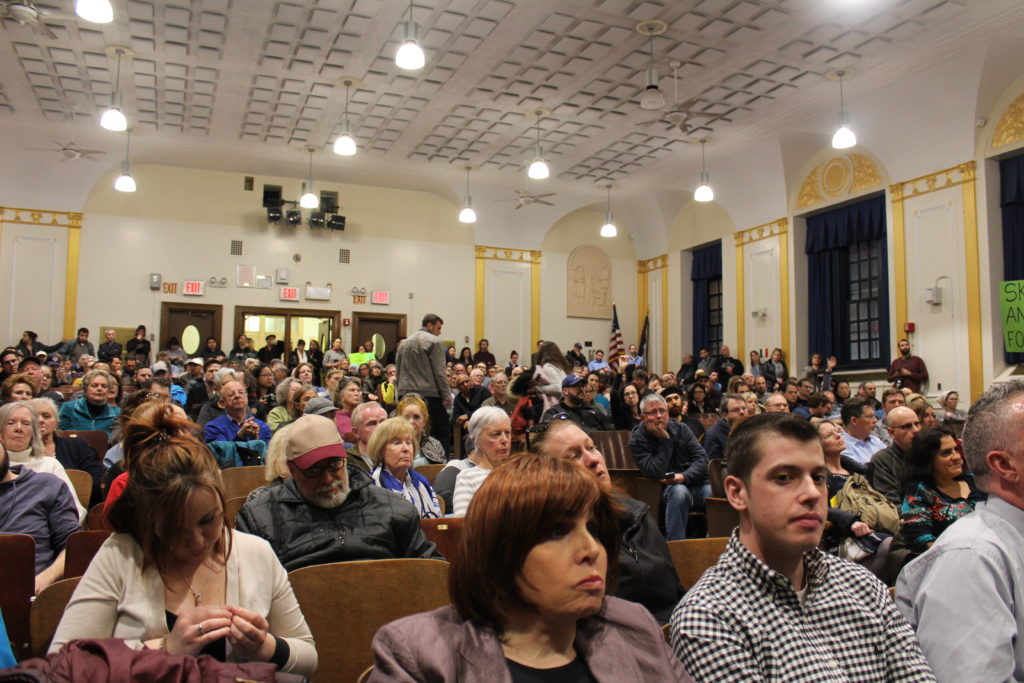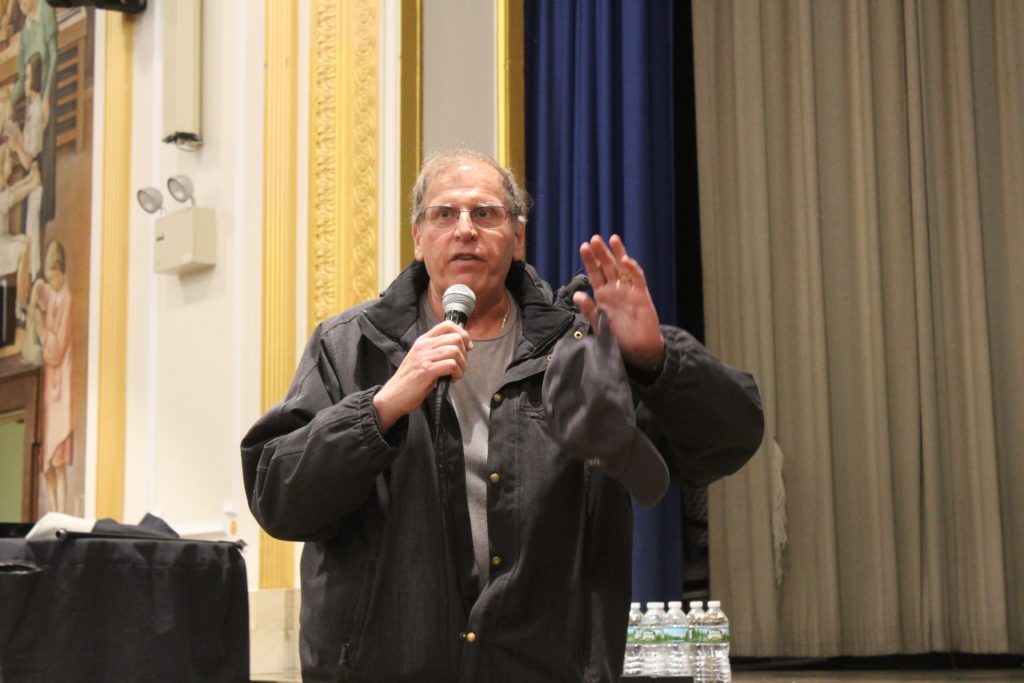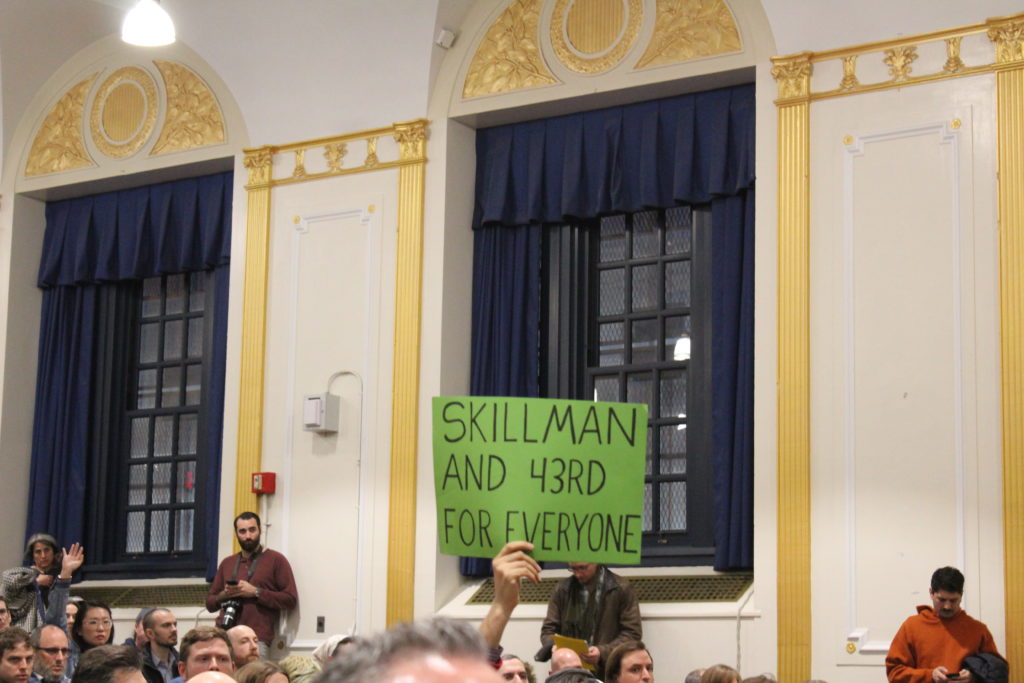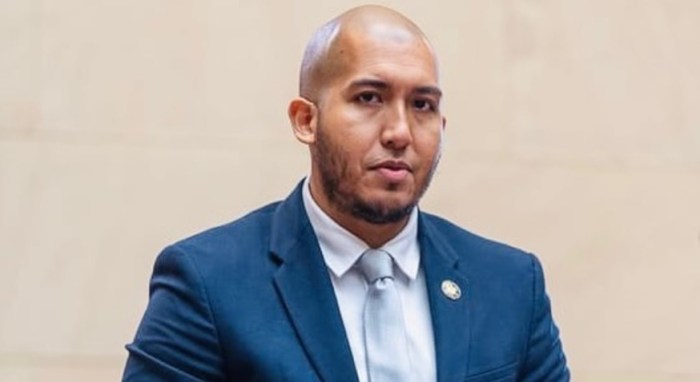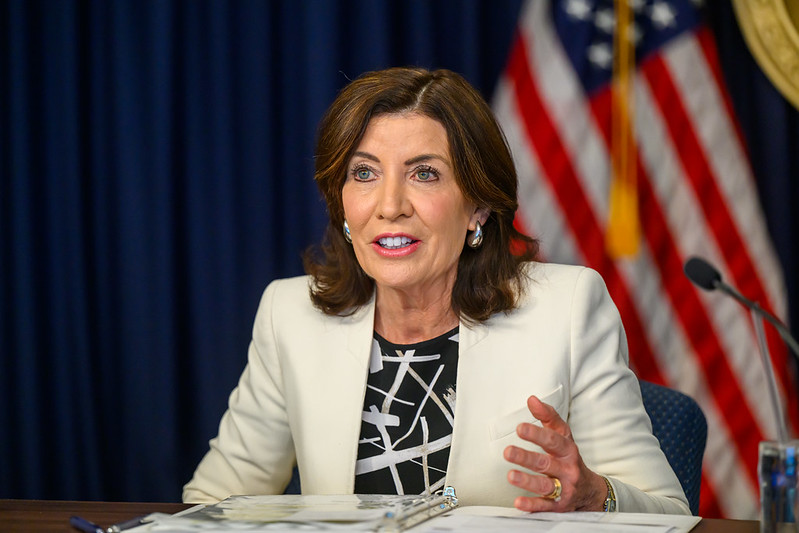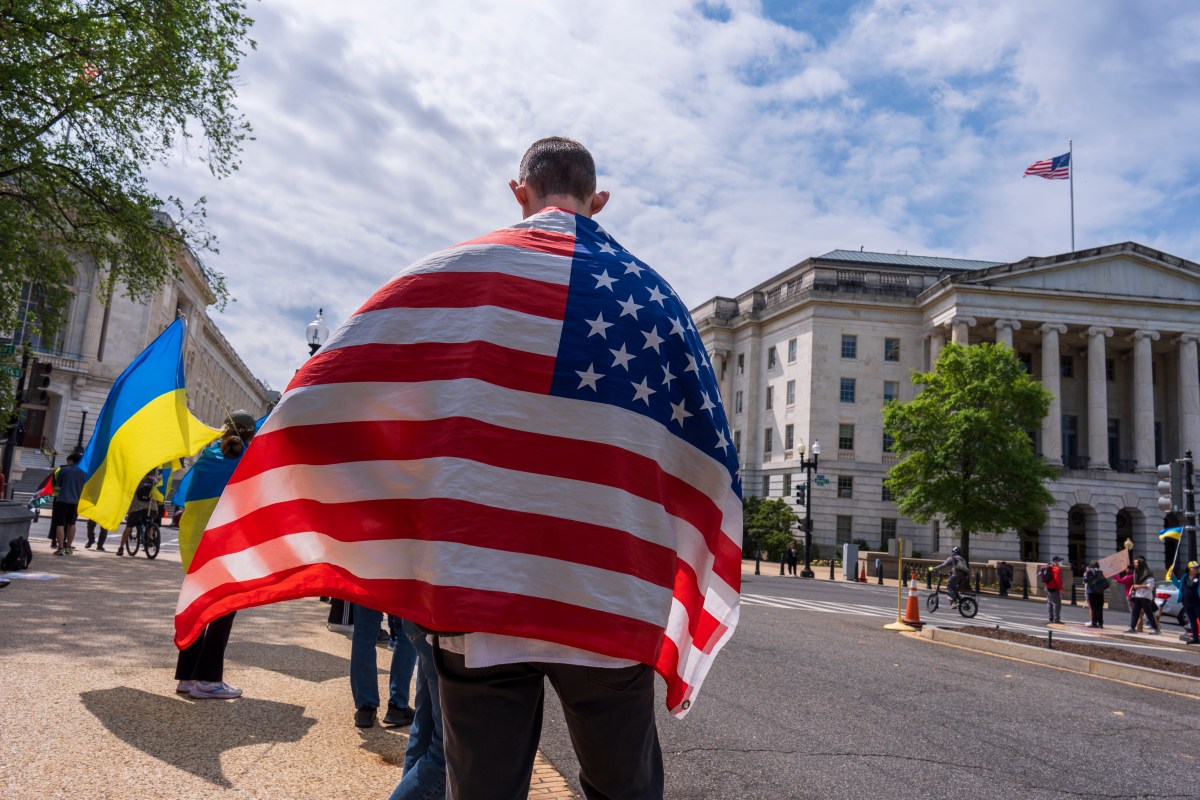The auditorium at P.S. 150 in Sunnyside was packed on March 26 for a town hall hosted by the Department of Transportation (DOT) to present an updated street safety improvement project for Skillman and 43rd Avenues.
This the second time the agency has presented a proposal for these corridors, after the initial plan in November was criticized by Community Board 2 for removing too many parking spots.
After the death of Gelacio Reyes, 32, of Corona last April, the DOT received letters from the community asking that safety improvements be installed on the avenues to prevent this from happening again.
Reyes’ wife, Flor Jimenez, attended the meeting with their 1-year-old daughter to implore the city agency to make the corridors safer for cyclists. Reyes was killed by a 25-year-old drunk driver as he was cycling home from his shift as a delivery man in Manhattan.
“I don’t want more children to be orphaned as my daughter here, she was just one-month-old [when her dad died],” Jimenez said through a translator. “I don’t want other families to go through this. What we’re going through is very difficult. Maybe if the drivers would be more conscientious, maybe this wouldn’t happen.”
Jimenez received a standing ovation after giving her speech through tears though later in the meeting, many in the crowd argued that protected bicycle lanes would not make cyclists and pedestrians safer and that what Sunnyside needed was more parking.
Ted Wright, the DOT’s Bicycle Program Director, presented the new plan, which includes smaller pedestrian islands and offset crossings in certain intersections, which would require less parking removal.
In total, the new plan would give back 29 to 41 parking spots between both corridors. While the original proposal removed 158 parking spots, this would remove 117 to to 129.
The corridors are a Vision Zero priority because of the high number of injuries that occurred there. According to DOT data, 283 people — 61 pedestrians and 34 cyclists — were injured between 2012 through 2016.
Queens DOT Commissioner Nicole Garcia said that in sections of the city where bicycle lanes were implemented, injuries have decreased and cars have slowed down.
“Where we implement these bike lanes, it visually narrows the roadways so it makes traffic more predictable, safer and drivers drive at slower speeds so people can get across the street,” she said.
The DOT also cited the increase of cyclists using the corridors to get to Queens Boulevard and the Queensboro Bridge as a reason for installing the protected bike lanes. According to the agency, more than 1,400 cyclists used the existing bike lanes on the avenues on a weekday in May 2017.
But the changes didn’t satisfy many people in the audience, who said they already find it difficult to find parking in the area and argued that local businesses would be negatively impacted.
Patricia Dorfman, the executive director of the Sunnyside Chamber of Commerce, said that though she is a cyclist herself, local business owners told her they were worried about the plan.
“All the small business along 43rd Avenue, Skillman Avenue, even 42nd street, 48th Avenue and Queens Boulevard are frightened that they will actually go out of business,” she said. “I would love to have a city with protected bike lanes. It would be a dream but our transit is a joke.”
Garry O’Neill, the owner of Aubergine Cafe at 49-22 Skillman Ave., is an avid cyclist and is also a member of Transportation Alternatives, a nonprofit that advocates for “better bicycling, walking, and public transit for all New Yorkers.”
“We’re all in favor of safer streets and all in favor of Vision Zero,” he said. “Our concerns have not changed with the proposal that was presented in December. We all agree on the need to slow traffic and the elimination of through trucks and on the need for some safer pedestrian crossings. These issues can be fixed without protected bike lanes.”
He added that the lanes would not guarantee safer streets but would guarantee “loss of business.”
In an analysis of 12 cities that implemented bicycle lanes across specific commercial corridors, studies found that non-drivers spent a similar amount or more money in the area where the lanes were installed.
The DOT did not provide information on what the possible affects would be on local businesses in Sunnyside and Woodside.
Several people in the audience said the DOT’s statistics citing the increase in bicycle lane usage were wrong.
“I stood outside for 10 hours counting bikes for two days in the summer,” said Gennaro Massaro, a retired transportation planner from Woodside. “Nowhere did I ever see 1,400 bikes. These are bogus figures.”
Massaro also claimed that Councilman Jimmy Van Bramer, who helped organize the meeting and whose husband is a member of Transportation Alternatives, could not “separate” himself “from an issue that your spouse is involved in.”
“First of all, let me just say Gennaro, you have come to my office, you have said some of the most offensive things to me and my staff, and I am not going to let your homophobia and your racist attitude impact what happens,” Van Bramer responded. “If you think that you’re doing the side opposed to bike lanes a favor by attacking me and my husband, you are dead wrong.”
Cycling advocates on the other hand, spoke about the dangerous conditions posed by drivers and praised the plan.
Nick Johnson, who lives on 46th Street and Skillman Avenue, said he believes the plan will make the neighborhood safer for his children and will also make his commute to Manhattan safer.
“Cyclists have kids, too,” he said. “I have two of them and every morning I cross 43rd Avenue and cross Skillman Avenue as I walk them to school. I believe these improvements are going to make the neighborhood safer and slow the cars down and make my children safer.”
He added that he cycles to midtown Manhattan because “it is faster, cheaper, more predictable and a hell of a lot more fun than the 7 train.”
Both Parent Teacher Association Presidents of P.S. 11 came out against the plan, arguing that a bicycle lane adjacent to the school would pose a threat to students.
Laura Shepard, a lifelong Queens resident who moved to Woodside recently, said the convenience of the existing bike lanes on the corridors are “extraordinary, but the risks are real.”
“Like everyone here who rides on Skillman and 43rd Avenues, my life is repeatedly threatened by the drivers who have used the existing bike lane by driving and parking in it, forcing me to merge onto speeding traffic. No amount of enforcement can address these chronic issues in real time so we need an infrastructure solution.”
Shepard said she chooses not to commute by bike to work in Manhattan because the streets as they are currently configured are “stressful” and “harrowing during rush hours.”
“Instead, I squash my way into the 7 train wishing I felt safe enough to bike instead,” she said. “When the L train shuts down next April and averted Brooklynites flock to the 7 train in Long Island City, exacerbating delays and overcrowded [trains], I hope these protected bike lines are in place so I have a quick, safe and reliable alternative.”
According to a spokesperson for the DOT, the city agency will incorporate feedback received from the meeting into its plan.
“After hearing from residents, business owners, and other stakeholders during a spirited discussion at Monday’s town hall, we will incorporate valuable input into the design for Skillman and 43rd Avenues and will continue to work with both elected officials, including Council Member Van Bramer, and with Community Board 2,” the spokesperson said.

